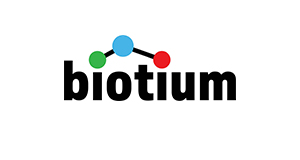n-Myc (Neuroblastoma Marker)(NMYC-1), 1mg/mL
n-Myc (Neuroblastoma Marker)(NMYC-1), 1mg/mL
SKU
BTMBNUM2726-50
Packaging Unit
50 µl
Manufacturer
Biotium
Availability:
loading...
Price is loading...
Description: The v-Myc oncogene, initially identified in the MC29 avian retrovirus, causes myelocytomas, carcinomas, sarcomas and lymphomas, and belongs to a family of oncogenes conserved throughout evolution. In humans, the family consists of five genes: c-Myc, N-Myc, R-Myc, L-Myc and B-Myc. Amplification of the N-Myc gene has been found in human neuroblastomas and cell lines. Its amplification correlates well with the stage of neuroblastoma disease. Immunological studies have shown that the human N-Myc gene encodes a nuclear phosphoprotein that exhibits relatively short (30 min) half life in vivo. The prototype member of the family, c-Myc p67, binds DNA in a sequence-specific manner subsequent to dimerization with a second basic region helix-loop-helix leucine zipper motif protein, designated Max. Primary antibodies are available purified, or with a selection of fluorescent CF® Dyes and other labels. CF® Dyes offer exceptional brightness and photostability. Note: Conjugates of blue fluorescent dyes like CF®405S and CF®405M are not recommended for detecting low abundance targets, because blue dyes have lower fluorescence and can give higher non-specific background than other dye colors.
Product origin: Animal - Mus musculus (mouse)
Conjugate: Purified, BSA-free
Concentration: 1 mg/mL
Storage buffer: PBS, no BSA, no azide
Clone: NMYC-1
Immunogen: Recombinant full-length human n-Myc protein.
Antibody Reactivity: n-Myc
Entrez Gene ID: 4613
Antibody Application Notes: For coating for ELISA, order Ab without BSA/Higher concentration may be required for direct detection using primary antibody conjugates than for indirect detection with secondary antibody/Optimal dilution and staining procedure for a specific application should be determined by user/Recommended starting concentrations for titration are 1-2 ug/mL for most applications, or 1 ug/million cells/100 uL for flow cytometry
Product origin: Animal - Mus musculus (mouse)
Conjugate: Purified, BSA-free
Concentration: 1 mg/mL
Storage buffer: PBS, no BSA, no azide
Clone: NMYC-1
Immunogen: Recombinant full-length human n-Myc protein.
Antibody Reactivity: n-Myc
Entrez Gene ID: 4613
Antibody Application Notes: For coating for ELISA, order Ab without BSA/Higher concentration may be required for direct detection using primary antibody conjugates than for indirect detection with secondary antibody/Optimal dilution and staining procedure for a specific application should be determined by user/Recommended starting concentrations for titration are 1-2 ug/mL for most applications, or 1 ug/million cells/100 uL for flow cytometry

 Deutsch
Deutsch







